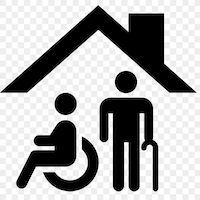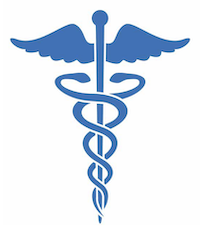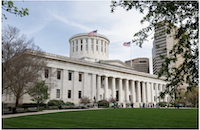By Nada Hassanein

Los Angeles pediatrician and urgent care specialist Dr. Ilan Shapiro worries for his chronically ill patients as he watches Congress weigh significant cuts to Medicaid.
He thinks of a boy who, before finding Shapiro’s clinic, was in and out of emergency rooms and intensive care units because of severe asthma attacks, instead of competing in soccer games and studying for exams. The boy’s parents were losing hours and pay at work with the frequent ER visits.
Shapiro, who is Latino, works at a federally qualified health care center, a clinic for low-income patients. Most of his patients are people of color on Medicaid, and roughly a quarter of them are children.
Research shows Latino and black family physicians are more likely to see Medicaid patients compared with their white and Asian counterparts. Experts say the Medicaid cuts Congress is weighing would strap health care centers that rely on already-low Medicaid reimbursements, disproportionately affecting communities of color and the physicians they rely on.
It's not just health insurance. It's a lifeline for the entire family that could be severely impacted. – Dr. Ilan Shapiro
Of the 72 million people covered by Medicaid, the state-federal health insurance program for people with low incomes or disabilities, more than half are people of color, with black and Hispanic people disproportionately represented on the rolls.
Black and Hispanic patients have a higher risk of conditions such as high blood pressure, kidney disease and certain cancers, making health care access crucial.
Congressional Republicans are considering $880 billion in cuts to federal Medicaid spending to offset trillions in tax cuts proposed by President Donald Trump. Conservatives have long argued that Medicaid is too expensive. They assert its expansion under the Affordable Care Act to more working adults has diverted too much money toward nondisabled people, taking resources away from vulnerable populations the program was originally intended to help.
But clinicians and policy analysts say the federal Medicaid cuts could have an especially detrimental impact on vulnerable enrollees, including children, older adults and people with disabilities or chronic illnesses, as states are forced to find savings to fill the gap.
Black maternal health advocates, researchers press on amid federal funding cuts
One GOP proposal targeting Medicaid expansion could lead to reductions in children’s health insurance programs, according to a February report by the Urban Institute. The think tank estimates that proposed cuts to federal Medicaid expansion spending could increase the number of uninsured kids by 11.8%.
“I’m deeply afraid,” said Shapiro. “It’s not just health insurance. It’s a lifeline for the entire family that could be severely impacted.”
Bias and language barriers
Just 6% of U.S. physicians are Latino and 5% are black, according to the Association of American Medical Colleges.
Sustaining the relatively few medical practices with black and Hispanic providers is important amid evidence that racial bias, lack of access to culturally competent care and language barriers lead to poorer health outcomes or access.
For example, analyses have shown black patients are less likely to be prescribed pain medication, and some clinicians hold false ideas that black patients have a higher pain tolerance. Nearly 1 in 3 black, Hispanic and multiracial women reported mistreatment in medical settings during pregnancy and delivery, such as receiving no help when asking for it or being shouted at, according to a Centers for Disease Control and Prevention study.
Language barriers, which Latino communities are more likely to face, are also associated with poorer health or limited access to health care.
“We understand the language and cultural concordance and the improved outcomes,” said Dr. Linda Mirdamadi, an adjunct clinical assistant professor at the University of Southern California’s Keck School of Medicine who serves on the National Hispanic Medical Association’s board of directors. “There’s a sense of trust.”
Mirdamadi said federal cuts to Medicaid would lead to loss of preventive care for her large, diverse community.
“If they don’t have access to health care, they’re not going to have the access to chronic disease prevention, to vaccines, to cancer prevention screening,” she said. “It is going to just increase the disparity gaps that already exist.”
‘Ripple effect’
Dr. Roger Mitchell, president-elect of the National Medical Association, which represents black physicians, said a widespread loss of Medicaid coverage would affect everybody, even people with private insurance. People without health coverage often don’t have primary doctors and forgo preventive care, resulting in more trips to the emergency room. That can lead to longer wait times at ERs for everyone, regardless of their health insurance.
Mitchell also pointed out that Medicaid reimbursements are a major funding stream for hospitals and clinics that see a lot of enrollees. Without that money, many of those providers might be forced to scale back their services or close.
“The ripple effect is enormous,” said Mitchell, who heads Howard University Hospital in Washington, D.C., where about 40% of patients are covered by Medicaid. “This is an issue that’s not just affecting one portion of the U.S. populace, but all of us, and has the potential to have huge harm.”
Medicaid cuts could hurt older adults who rely on home care, nursing homes
Dr. Zita Magloire is a family physician, but she also offers obstetric care along with two OB-GYNs at Cairo Medical Care in the south Georgia city of Cairo. The city is the county seat of Grady County, which has about 26,000 residents, almost 30% of whom are black.
Her practice is one of the few in the area that takes Medicaid for obstetric care, she noted, and serves many Central American immigrant patients who drive from the surrounding rural areas to her clinic. When another practice in the area started cutting services, her center absorbed those patients.
“There’s not a lot of providers that accept Medicaid,” she said. “What does that look like? Well, they [patients] show up with no prenatal care — and then, you have very high-risk patients.”
Back in Los Angeles, the boy whose family found Shapiro’s clinic is now a teenager. He received stable asthma care there and got Medicaid coverage.
“He started having a medical home. Everything changed. The ER visits and the intensive care unit visits changed to soccer games,” Shapiro said. Having coverage, he continued, “makes a huge impact for the entire community.”
• • •• • •
This story is provided by States Newsroom, a national 501 (c)(3) nonprofit. See the original story here.














